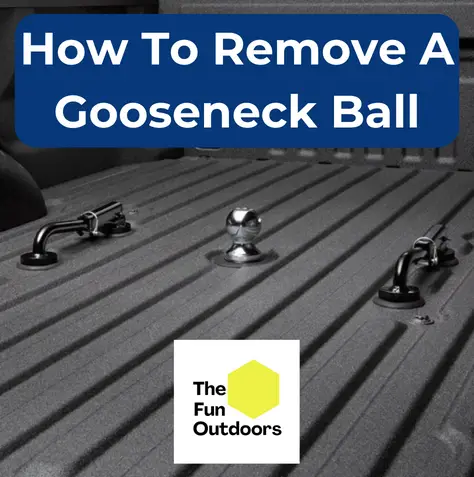Removing a gooseneck ball can seem like a daunting task, but with the right tools and techniques, it can be a quick and easy process. In this article, we’ll walk you through the process of how to remove a gooseneck ball.
You can remove a gooseneck ball by locating the release lever, pulling the lever up, loosening the ball from the hitch with a socket wrench, and removing the ball from the hitch. Stuck or rusted hitches may need spray lubricant to get them to loosen.
Key Takeaways
- Understanding the components of the gooseneck ball is crucial to removing it effectively.
- Proper preparation, including gathering the necessary tools and protecting your truck bed, can make the process easier.
- Pro tips, such as applying lubricant and using a pry bar, can help you remove a stuck gooseneck ball.
Understanding the Gooseneck Ball
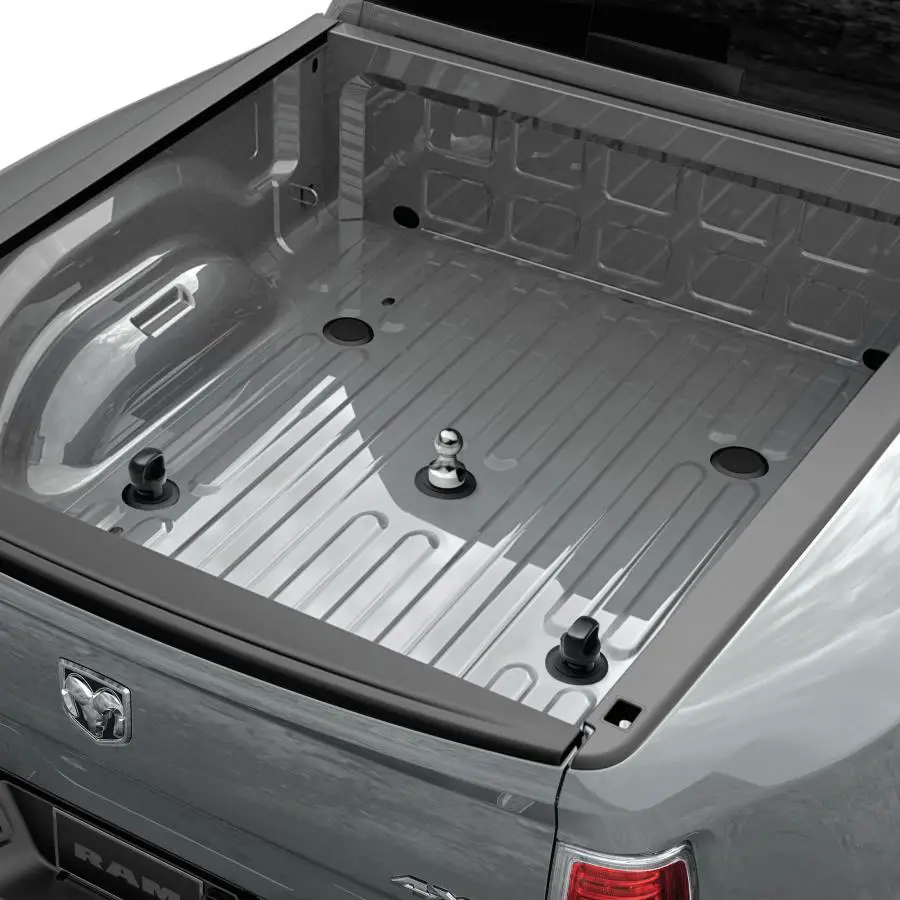
So, you’ve got a gooseneck hitch ball on your truck, and you need to remove it. But before you start wrenching away, it’s important to understand a few things about this crucial piece of hardware.
First off, what exactly is a gooseneck hitch ball? Well, it’s a type of trailer hitch that’s designed to attach to the bed of your truck, rather than the rear bumper.
The hitch ball itself is a spherical metal component that’s attached to the top of a vertical post, which in turn is bolted to the bed of your truck.
When you hook up your trailer, the gooseneck hitch on the trailer slides over the hitch ball, locking it in place and providing a secure connection between truck and trailer.
Now, why might you need to remove the gooseneck hitch ball? There are a few reasons.
Maybe you’re switching to a different size ball, or maybe you’re taking the hitch off your truck entirely.
Whatever the reason, it’s important to do it right to avoid damaging your truck or the hitch.
Before you get started, you’ll need to gather the right tools.
You’ll need a socket wrench set, a torque wrench, and an adjustable wrenc
. Make sure you choose the appropriate socket size for your hitch ball.
Once you’ve got your tools ready, it’s time to start removing the gooseneck hitch ball.
But before you do, be sure to consult your truck’s owner’s manual for specific instructions and safety precautions.
If you’re not confident in your ability to do the job, don’t hesitate to seek out a professional mechanic or trailer service center.
With that said, let’s get to work!
See Related: Gooseneck vs 5th Wheel Hitch differences
Why Does the Gooseneck Ball Get Stuck?
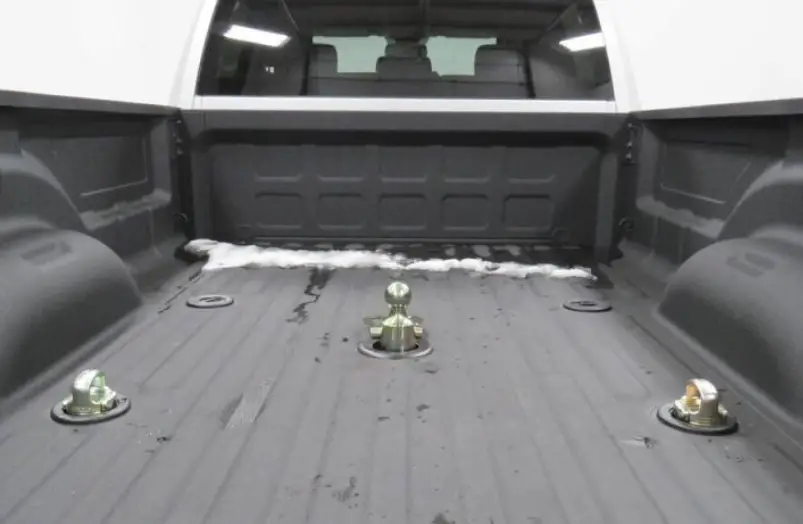
Removing a gooseneck ball can be a tricky task, especially if it has been left in the truck for an extended period.
There are several reasons why the gooseneck ball could get stuck, and understanding these reasons can help you prevent the issue from happening in the future.
One of the most common reasons for a stuck gooseneck ball is rust.
Over time, the hitch ball can accumulate rust, which can make it difficult to remove.
The rust can cause the ball to seize up, making it nearly impossible to remove without the right tools and techniques.
Another reason why a gooseneck ball can get stuck is mud.
If you frequently drive your truck on muddy roads, the mud can accumulate in the hitch, making it difficult to remove the ball.
The mud can also cause the ball to seize up, which can make it challenging to remove.
Finally, a gooseneck ball can get stuck if it has been left in the truck for an extended period.
If the ball has not been removed for a long time, it can become stuck in the hitch, making it difficult to remove.
To prevent your gooseneck ball from getting stuck, it’s important to keep it clean and well-lubricated.
Regular maintenance can help prevent rust and other issues that can cause the ball to seize up.
It’s also a good idea to clean the hitch and ball after each use to prevent mud buildup.
Preparation for Removal
Removing a gooseneck hitch ball may seem like a daunting task, but with the right tools and techniques, it can be done quickly and easily.
Before you begin, make sure you have the following tools and equipment ready:
- Socket wrench set: Choose the appropriate socket size for your hitch ball.
- Torque wrench: This will be needed when reinstalling the hitch ball.
- Adjustable wrench: Useful for loosening and tightening certain components.
- Safety glasses: Protect your eyes from flying debris.
- Gloves: Protect your hands from sharp edges.
Once you have your tools ready, it’s time to prepare your truck for the removal process.
Begin by removing any debris or dirt from the hitch area.
This will make it easier to see what you’re doing and prevent any damage to your truck.
Next, locate the hitch pin and remove it.
This is typically located on the underside of the bed of your truck. Use a socket wrench to remove the bolts holding the hitch pin in place.
Once the bolts are removed, slide the hitch pin out of the hitch assembly.
How To Remove a Gooseneck Ball Step-by-Step
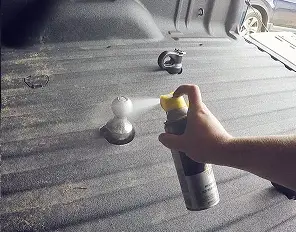
Removing a gooseneck ball can be a daunting task, but with the right tools and techniques, it can be done quickly and easily. Here is a step-by-step guide to help you remove your gooseneck ball.
- Gather the necessary tools: You will need a socket wrench set, a torque wrench, and an adjustable wrench. Choose the appropriate socket size for your hitch ball.
- Locate the release lever: The release lever is usually located on the top of the hitch ball. Pull the lever up to release the ball.
- Loosen the ball: Use the socket wrench to loosen the ball from the hitch. Turn the wrench counterclockwise to loosen the ball.
- Remove the ball: Once the ball is loose, you can remove it from the hitch. Be sure to lift it straight up to avoid damaging the hitch.
- Inspect the hitch: While the ball is removed, take a moment to inspect the hitch for any damage or wear. If you notice any issues, it may be time to replace the hitch or have it repaired.
- Reinstall the ball if desired: When you are ready to reinstall the ball, use the torque wrench to tighten it to the appropriate torque specification. This will ensure that the ball is securely attached to the hitch.
Removing a gooseneck ball can be a bit tricky, but with the right tools and techniques, you can do it quickly and easily.
Just be sure to follow these steps carefully to avoid damaging your hitch or the ball. Good luck!
Pro Tips for Easier Removal
Removing a gooseneck ball can be quite a challenge, especially if it has been sitting in place for a long time. However, with a few pro tips, you can make the process much easier and less stressful. Here are some tips to help you with the task:
1. Use PB Blaster or Penetrating Oil
One of the most important things you can do to make the removal process easier is to use PB Blaster or penetrating oil.
These products are designed to dissolve rust and corrosion, making it easier to remove the ball.
Simply spray the product onto the ball and let it sit for a few minutes before attempting to remove it.
You may need to repeat the process a few times to get the desired results.
2. Grease the Ball
Another pro tip for easier removal is to grease the ball before installing it.
This will help prevent rust and corrosion from building up, making it easier to remove the ball when the time comes.
Simply apply a generous amount of grease to the ball before installing it, and make sure to reapply the grease periodically to keep the ball lubricated.
3. Use a Torque Wrench
When reinstalling the gooseneck ball, it’s important to use a torque wrench to ensure that it is tightened to the correct specifications.
This will help prevent the ball from coming loose while you’re towing, which could be dangerous.
Make sure to consult your owner’s manual or a professional mechanic to determine the correct torque specifications for your specific vehicle.
4. Don’t Be Afraid to Ask for Help
Removing a gooseneck ball can be a challenging task, especially if you’re doing it alone. Don’t be afraid to ask for help from a friend or family member.
Having an extra set of hands can make the process much easier and less stressful. Plus, it can be a fun bonding experience!
With these pro tips, you should be able to remove your gooseneck ball with ease.
Remember to be patient and take your time, and don’t hesitate to ask for help if you need it. Good luck!
Maintaining Your Gooseneck Hitch
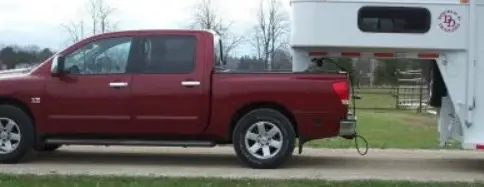
You’ve invested in a gooseneck hitch for its superior towing capabilities, but it’s important to remember that maintenance is key to ensuring its longevity.
Here are some tips to help you keep your gooseneck hitch in top condition.
Prevent Rust and Corrosion
Rust and corrosion can weaken your hitch and make it less stable. To prevent this, make sure to keep your hitch clean and dry.
After towing, use a wire brush to remove any dirt or debris from the hitch ball and surrounding areas. Apply a rust inhibitor or lubricant to the ball and hitch to prevent rust from forming.
Control Sway
Sway can be dangerous and make towing more difficult. To control sway, make sure your hitch is properly installed and adjusted.
Check your weight distribution and adjust it as needed. Use sway control devices such as sway bars or weight distribution hitch systems to help keep your trailer stable.
Ensure Stability
A stable hitch is essential for safe towing. Check your hitch for any signs of wear or damage, such as cracks or bends.
Make sure all bolts and nuts are tightened to the manufacturer’s specifications. Use lock washers or thread-locking compound to prevent bolts from coming loose.

